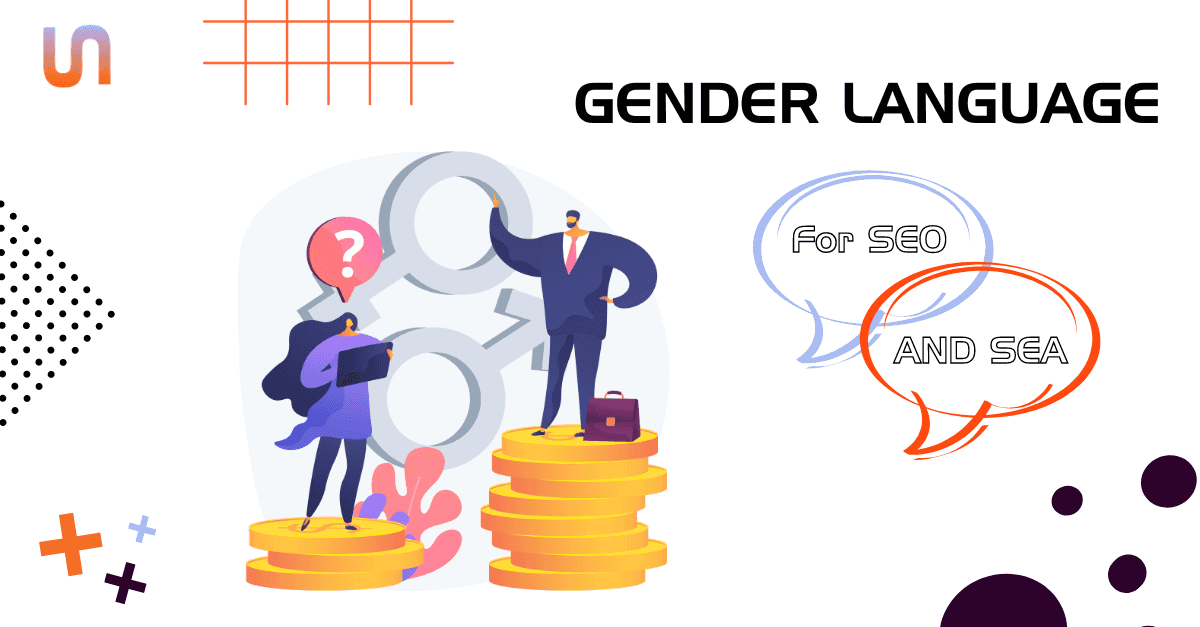Implement gender language for SEO and SEA correctly
The topic of gendering has long since arrived at companies in all industries. However, many find it difficult to find a style that fits their own brand. In addition, the SEA area in particular presents a challenge for many.

Table of content
The topic of gendering has long since arrived at companies in all industries. However, many find it difficult to find a style that fits their own brand. In addition, the SEA area in particular presents many with a challenge. So what needs to be considered here and what solutions are available?
Gender-appropriate language has been leading to heated discussions for some time now. Companies are increasingly forced not only to take a clear position here, but also to present a uniform implementation. Marketing faces the problem that, on the one hand, it wants to deliver contemporary communication, but on the other hand, it does not want to trigger negative feelings among skeptical people. So it quickly becomes clear that - as is so often the case in marketing - addressing the right target group is the key.
There is no universal solution
The young, environmentally conscious and totally hip sports start-up from Berlin Mitte will not have a hard time implementing gender-appropriate language. After all, acceptance among its clientele is very high. A B2B company that deals primarily with a male as well as older and above all conservative clientele needs a well thought-out solution in order not to lose touch with the new marketing world in the long term.
Accordingly, everyone has to find their own way here. At first glance, this sounds easier than expected. Because at the end of the day, all parties involved are subject to the algorithms of the search engines. And there are several sticking points here.
On the one hand, Google in particular does not yet seem to have dealt with the issue in depth. In the German-speaking world, there was already the problem that long word creations - which are an integral part of the German language - are often not SEA-compliant. Gender-appropriate formulations are accordingly treated even worse by the algorithm. On the other hand, there is simply no uniform solution. Since everyone plays by their own rules here, Google and Co. can hardly adapt their own set of rules.
In addition, there are also technical challenges. If a gender form with a colon is used, baker:in is perceived by Google as the words baker and in. As soon as the gender asterisk is in use, it is almost impossible for the algorithm to correctly assign the terms.
Finally, the search query component must also be taken into account. Do users rely on searching for the keyword male or female doctor? Is there a change in behavior here? If so, when is the linguistic change large enough to be taken into account by the search engine algorithms?
In order to find the right approach for one's own clientele, it is therefore relevant to understand the current algorithms of the search engines, at least fundamentally. Furthermore, active A/B tests, for example, can help determine the relevant search queries and carry out appropriate SEA optimization.
Meta text and meta title - a challenge for gendering
Snippets are limited in length for titles and descriptions. Accordingly, it is not always possible to apply a gender-appropriate approach in this area. For companies, this means that they fall back on the male variant in case of emergency, as this usually (still) has the highest search volume. Whether and how this will change in the coming years remains to be seen.
But is it relevant at all to use male or female wording in snippets? In many areas, there are very good alternative solutions that do not negatively affect the performance of the SEA measure. For example, it often does not play a central role at all to address people in their gender form. After all, the focus is on services or a product, for example. Gender-neutral phrases are also a good option - specialist staff or teachers are just a few examples. The substantive gerund form is also frequently used (readers, visitors).
Any SEA and SEO efforts must always be considered in context. For example, to create a consistent user experience, the approach should remain the same from snippets to website content. This not only ensures better engagement with the readership. It also helps to optimize the content for specific keywords.
Conclusion - Gender language needs thoughtful concepts.
In the coming years, marketing departments in all industries will not be able to avoid finding individual and high-quality solutions for a gender-appropriate approach. In doing so, all factors must be taken into account. In addition to an appropriate address.
Contact us
Do you have a question? Just write us a message. We will get back to you as soon as possible.
